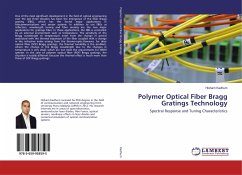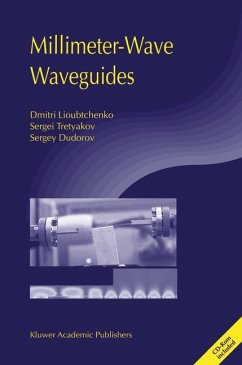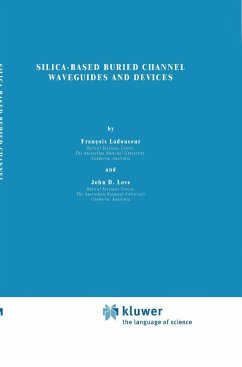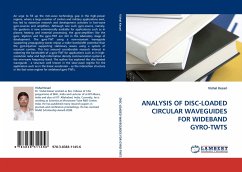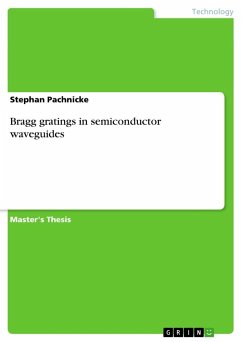
Bragg gratings in semiconductor waveguides

PAYBACK Punkte
0 °P sammeln!
Master's Thesis from the year 2001 in the subject Electrotechnology, grade: with distinction, City University London, language: English, abstract: Bragg gratings are important devices for both optical communications andsensing. These devices are used to design very narrow band optical filters, which canbe used in wavelength division multiplexing (WDM). It is also perceived that Bragggratings will be used to compensate the dispersion in modern fibre optictelecommunication networks. Semiconductor gratings are usually integrated intolasers to control the operating wavelength.City University Photo...
Master's Thesis from the year 2001 in the subject Electrotechnology, grade: with distinction, City University London, language: English, abstract: Bragg gratings are important devices for both optical communications andsensing. These devices are used to design very narrow band optical filters, which canbe used in wavelength division multiplexing (WDM). It is also perceived that Bragggratings will be used to compensate the dispersion in modern fibre optictelecommunication networks. Semiconductor gratings are usually integrated intolasers to control the operating wavelength.City University Photonic Modelling Group is a world leading research group onthe use of rigorous numerical techniques to design and optimise advanced photonicdevices for optical communications. The research group has already achieved resultson hypothetical one-dimensional (1-D) and realistic two-dimensional (2-D)structures. In this project a combination of three numerical methods has been used,all of which are rigorous, to simulate realistic three-dimensional (3-D) structures insemiconductor waveguides. The combination of these three accurate methods, thefinite element method (FEM), the least squares boundary residual (LSBR) methodand the transfer matrix method (TMM) turned out to be superior to the widely usedcoupled mode theory (CMT).The numerical study of different Bragg gratings shows interesting dependenciesof the characteristics of the gratings on the different design parameters. The workwas carried out for different mesh distributions, different numbers of mesh divisionsand different computational parameters. Another focus of the work was on thestability of the transmission and reflection coefficients obtained from the LSBRprogram. Furthermore the effect of inaccuracy occurring during the fabricationprocess has been studied.The results of this work have been compared to results found by other groups andfellows. We can say that this project is quite new in the field of reflection spectrumcomputation of realistic 3-D semiconductor Bragg gratings. Up to now only a fewpapers have been published on such 3-D semiconductor gratings.








